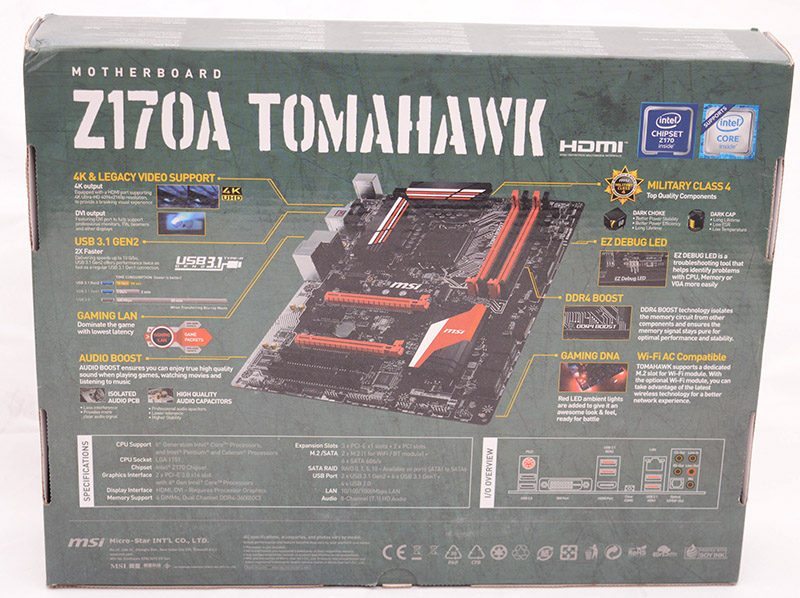MSI Z170A TOMAHAWK (LGA1151) Motherboard Review
John Williamson / 9 years ago
Introduction
 Intel’s Z170 enthusiast chipset has spawned a number of visually intriguing motherboard designs as manufacturers deviate from relatively bland concoctions commonly seen on the Z97 platform. MSI, in particular, has unleashed a stunning array of attractive products including the innovative Z170A XPOWER GAMING TITANIUM. It’s not style over substance either because MSI motherboards are packed with excellent features, a comprehensive software package and reliable construction. Of course, competition around the £100 mark is extremely fierce and it’s incredible the kind of functionality you can achieve on a sensible budget.
Intel’s Z170 enthusiast chipset has spawned a number of visually intriguing motherboard designs as manufacturers deviate from relatively bland concoctions commonly seen on the Z97 platform. MSI, in particular, has unleashed a stunning array of attractive products including the innovative Z170A XPOWER GAMING TITANIUM. It’s not style over substance either because MSI motherboards are packed with excellent features, a comprehensive software package and reliable construction. Of course, competition around the £100 mark is extremely fierce and it’s incredible the kind of functionality you can achieve on a sensible budget.
The company’s latest LGA1151 motherboard sports a gorgeous colour scheme and looks rather sleek. On another note, the Z170A TOMAHAWK supports USB 3.1 connectivity, 2-way Crossfire and it’s possible to reach remarkable speeds over an M.2 interface. Not only that, the DIMM slots can house extremely fast modules and there’s even the freedom to install an optional WiFi module. As you can see, this is a fantastic specification and I’m interested to see how the product fares against wonderful creations like the ASUS Z170 PRO GAMING. The question is, could this be the best motherboard available right now for single GPU usage scenarios? Let’s find out!
Specifications

Packing and Accessories
The motherboard comes in a rather striking box which emphasises the military theme. It’s quite unusual to see a motherboard box dominated by green which helps it to stand out from the competition. I’m also quite fond of the central MSI gaming logo and printed handles which contribute to a very attractive design.

On the rear section, there’s an explanation of the motherboard layout and internal features such as DDR4 Boost. This is a presented in a clear manner which makes the end-user instantly familiar with MSI’s exclusive technologies.

The motherboard is bundled with a user’s guide, I/O shield, installation guide, registration card, cable stickers, driver’s disk and SATA cables.




















